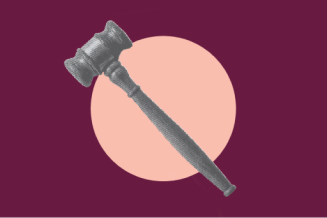The New York Times reported Sunday that the FBI had consistently used judgeless subpoenas, called National Security Letters, to investigate Americans in the "community of interest" of the bureau's actual target.
That's a mouthful, but basically it means they fixated on one dude and then cast out a net to other folks who had some form of contact with the individual at the specific focus of the NSL. Here's the pull quote:
The documents indicate that the Federal Bureau of Investigation used secret demands for records to obtain data not only on individuals it saw as targets but also details on their "community of interest" - the network of people that the target was in contact with. The bureau stopped the practice early this year in part because of broader questions raised about its aggressive use of the records demands, which are known as national security letters, officials said.
The community of interest data sought by the F.B.I. is central to a data-mining technique intelligence officials call link analysis. Since the attacks of Sept. 11, 2001, American counterterrorism officials have turned more frequently to the technique, using communications patterns and other data to identify suspects who may not have any other known links to extremists.
And, today, the inimitable Times legal reporter, Adam Liptak, did his own rundown of the informational tug-of-war between the ACLU and the government over records relating to the NSA surveillance scandal.
So, the Bush administration used unchecked investigative authorities broadly to get information of people it didn't suspect of any wrongdoing - and it's now looking to cover the whole thing up. Yawn. So old news, dudes. Let's do a little history.
Shortly after 9/11, a gentleman by the name of John Poindexter - a retired rear admiral, former National Security Advisor to President Reagan, and Iran-Contra conspirator (whose conviction was overturned thanks, in part, to the ACLU) - moved from a hi-tech defense contractor along the Washington Beltway into the halls of the Pentagon.
His allies in the White House and Department of Defense placed him in charge of a new desk at the Defense Advanced Research Projects Agency (DARPA), the military's equivalent of Q's workshop (though perhaps not with Kevlar wetsuits that double as awesome bespoke suits). At DARPA, Poindexter led a shadowy outfit called the Information Awareness Office, which, in turn, began to develop an equally shadowy, and slightly creepy, program called "Total Information Awareness," or TIA.
For a while, TIA developed in relative obscurity, largely because MSM (I hate that abbreviation, but what can you do?) reporters couldn't get enough information to write a real story and because most privacy folks couldn't believe that what was being described in the elaborate PowerPoint shows coming out of DARPA could actually fly. (The end product, according to Poindexter, would be a massive data-mining operation commingling dozens of metrics about millions of Americans in one big hot soup of omnipresent surveillance.)
Then, the floodgates opened. After the demise of another ill-fated Eastern Bloc-flavored program called "Operation TIPS," the next to fall (at least publicly) was TIA. But, though Poindexter got out of the Captain's chair, the program went black, and we understand that certain aspects of its technology have ended up in other initiatives.
Anyway, TIA was nothing more than an old pig dressed up real pretty for the pageant. It was yet another attempt to systematize and spruce up - with bits, bytes and enterprise servers - that age-old workaround to real policing: guilt by association.
As a constitutional democracy - a pretty robust one at that - we have to start asking ourselves a couple of searching questions when just keep moving from TIA to NSA and now to NSL. And the first question is - can we please get a four-letter abbreviation?
In any event, the Fourth Amendment - the whole search and seizure bit - protects, and I quote, "persons, houses, papers, and effects." Think about that for a second. If your house and person are protected, why would the Framers have thought to include the latter two zones of privacy. After all, if they can't break down your door, how can they get in your desk or rummage through your closet?
Point is, the Fourth Amendment isn't just a physical privacy force field surrounding your home, office and double-wide. No, it's a broader, standing injunction on the government that it may not pry - without good and articulable reason, and after independent review by a neutral referee - into the social, economic, ideological, political, professional, and emotional moves we make as autonomous humans, deserving of the liberty carved out for us so long ago by our heroic constitutional benefactors.
In short, our conscience is ours. To know it is to have our personal liberties by the throat. That's why the Fourth Amendment protects zones of privacy that, if invaded, betray our deepest thoughts and feelings.
Guilt by association is the oldest story in the book. Calling it - in some condescending, oblique bureaucratese - a "community of interest" search doesn't make it any less old.


